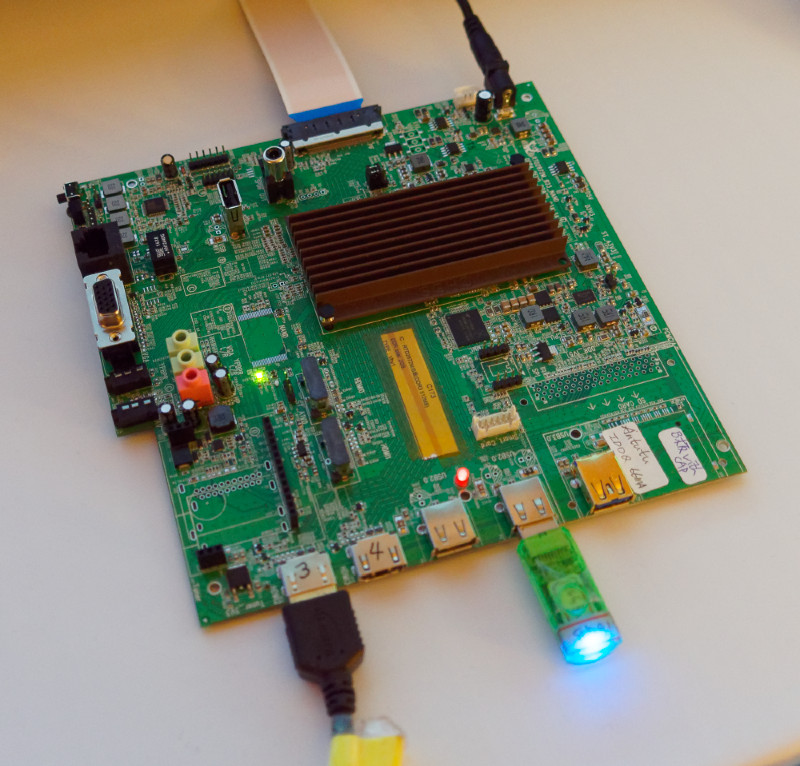Sometimes the chip companies at CES, especially those from Asia that are less sophisticated in their marketing approach are reluctant to talk to press such as us. This time, Realtek was happy to see and tell us about its TV SoCs and even allowed us to sit in on a demonstration to a TV brand.
Realtek was highlighting its RTD2872 single chip solution for UltraHD Android Smart TVs which supports HDR, either Dolby Vision, Technicolor, HDR 10/10+ or HLG. It includes the UltraHD decode and demodulation and has an integrated picture quality engine. The company had some good demonstrations of MEMC processing that showed very good performance in comparison with chips from other SoC vendors, especially in vertical motion, where noise was much reduced.
Other features include what Realtek calls a ‘local contrast enhancement layer’ which can enhance content to respond to incoming HDR content, without needed a FALD backlight. We were also impressed with an algorithm that could reduce noise in analogue video, which has a distinctive pattern. The chip has very fast channel switching and input switching and the company demonstrated a boot time of just three seconds. Where there multiple inputs, PiP functions can be supported, with even an UltraHD image being visible in a window. With external memory, PVR functions can be supported.
The SoC runs Android and Realtek said that it can run, with Google’s quality approval, a full Android Smart TV stack in just 1.5GB of RAM, where the normal requirement is for 2GB. This, of course, means potential cost and power savings. The implementation can run the latest next generation apps such as YouTube, Google Play and Netflix.
Finally, the chip supports Dolby Atmos decoding and rendering and Realtek gave us a very impressive demonstration of Dolby Atmos content being rendered and played back through some very small and low cost downward-facing TV speakers. As the chip is competitively priced, Realtek told us, it can bring relatively high end features even to lower end sets.
 Realtek’s RTD2872 makes for a very small chassis but with UHD, HDR and Atmos. Image:Meko
Realtek’s RTD2872 makes for a very small chassis but with UHD, HDR and Atmos. Image:Meko

